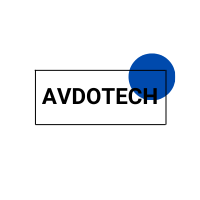Inbound Marketing Techniques Every Business Should Use

Inbound marketing represents a paradigm shift from traditional outbound tactics to ‘pull marketing’. This customer-centric approach focuses on attracting prospects to your brand via valuable content and interactions, creating customer trust and fostering engagement. It’s about understanding the customer’s needs and providing solutions even before they make a purchase, ensuring a lasting relationship.
In the digital era, the art of attracting customers has evolved significantly, giving rise to inbound marketing. This approach marks a shift from traditional, interruptive outbound marketing to a strategy that ‘pulls’ customers in with engaging, relevant content. Today’s consumers, savvy and discerning, prefer authenticity and personalization, making inbound marketing not just a choice but a necessity for businesses.
At its core, inbound marketing revolves around the stages of Attract, Convert, Close, and Delight. This journey entails drawing the right audience, turning them into loyal customers, and ultimately, into brand advocates. Unlike the product-centric focus of outbound methods, inbound marketing is deeply customer-centric, emphasizing customer needs and interests at every step.
This strategy integrates SEO optimization, content marketing, social media marketing, and more, to create a compelling narrative that resonates with the target audience. It’s about being present where your customers seek information, offering solutions, and building lasting relationships.
This article aims to unravel the intricate world of inbound marketing, offering insights and actionable techniques for businesses to attract, engage, and delight their audience in today’s competitive digital landscape.
Understanding the Inbound Marketing Approach
Inbound marketing is rooted in understanding customer behavior and preferences. Unlike outbound marketing, which often disrupts potential customers with unsolicited messages, inbound marketing draws them in organically through meaningful and helpful content. This approach is based on the fundamental Inbound Marketing Stages: Attract, Convert, Close, and Delight, each stage serving a distinct purpose in the customer journey and contributing to building a sustainable business-customer relationship.
The inbound marketing approach represents a fundamental shift in how businesses interact with their customers. Rooted in understanding and meeting customer needs, this methodology contrasts sharply with traditional outbound marketing’s disruptive tactics. Inbound marketing is based on the principle of earning a customer’s attention through valuable and relevant content, rather than buying it.
This strategy is built on four key stages: Attract, Convert, Close, and Delight. Each stage corresponds to a different part of the customer journey. The Attract stage is about drawing in the right audience with high-quality content. In the Convert stage, interactions are nurtured, turning visitors into leads. The Close stage involves turning those leads into customers, and finally, in the Delight stage, businesses continue to engage with customers, providing outstanding service that turns them into loyal advocates.
This customer-centric approach is not just about selling; it’s about building lasting relationships and creating a positive, holistic experience that resonates with the audience’s needs and values.
Key Techniques of Inbound Marketing
Inbound marketing leverages a suite of techniques tailored to attract, engage, and delight customers. Each technique plays a unique role in the customer journey, from initial discovery to long-term loyalty.
SEO Optimization
Search Engine Optimization (SEO) is pivotal in enhancing a brand’s online presence. By integrating strategic keywords and optimizing website content, businesses can climb higher in search engine rankings. This increased visibility leads to attracting a more targeted audience, essential in the Attract stage of inbound marketing.
Content Marketing
Content is the backbone of inbound marketing. This involves creating informative, engaging, and relevant content like blog posts, infographics, and videos. Effective content marketing not only attracts the right audience but also establishes a brand as a thought leader in its industry, facilitating the Convert stage by nurturing leads into potential customers.
Social Media Marketing
Social media platforms are powerful tools for engaging directly with audiences. Through tailored content and active engagement on these platforms, businesses can create a community around their brand. Social media marketing is crucial for both attracting new leads and maintaining ongoing customer relationships.
Email Marketing
Email marketing is a direct line to customers, used for both lead nurturing and customer retention. Personalized email campaigns with clear calls to action (CTAs) and valuable content can drive conversions and foster ongoing customer engagement, playing a key role in the Close and Delight stages of the inbound methodology.
These techniques, when implemented cohesively, form a robust inbound marketing strategy that aligns with modern consumer behaviors, driving sustainable business growth.
Advanced Inbound Marketing Strategies
Beyond the foundational techniques of inbound marketing, there are advanced strategies that can further enhance engagement and conversion rates. These strategies require a deeper understanding of market dynamics and customer psychology.
Personalization and Targeting
In the era of information overload, personalized marketing messages stand out. Advanced inbound strategies involve using data analytics to understand customer preferences and behavior, tailoring content and campaigns to individual needs and interests. This can dramatically increase engagement and conversion rates.
Influencer Marketing
Collaborating with influencers can lend credibility and extend the reach of your brand. By associating with respected figures in your industry or niche, you can tap into their audience, gaining trust and attention more effectively.
Interactive Content
Leveraging interactive content like quizzes, polls, and interactive videos can significantly increase user engagement. This type of content not only entertains but also provides value, encouraging users to spend more time with your brand.
Advanced SEO Tactics
Beyond basic SEO, advanced tactics may include voice search optimization, focus on local SEO, and optimizing for featured snippets in search results. These strategies ensure you stay ahead in the constantly evolving SEO landscape.
Marketing Automation
Implementing automation tools for routine marketing tasks can increase efficiency and consistency. Automated email campaigns, social media posting, and lead nurturing processes ensure that no opportunity for engagement or conversion is missed.
These advanced inbound marketing strategies offer a more refined approach to reaching and engaging with your target audience, ultimately driving more conversions and building stronger customer relationships.
Implementing Inbound Marketing Effectively
Effective implementation of inbound marketing requires a strategic approach that aligns with your business goals and resonates with your target audience. Here’s how to do it effectively:
Develop a Comprehensive Strategy
Start with a clear plan that outlines your objectives, target audience, content themes, and channels for distribution. Understanding your audience’s needs and preferences is crucial for creating content that resonates with them.
Build a Skilled Team
Assemble a team with diverse skills in content creation, SEO, social media, email marketing, and analytics. The right team will be able to execute your strategy effectively and adapt to changes in digital marketing trends.
Create Quality Content Consistently
The heart of inbound marketing is valuable content. Develop a content calendar and consistently produce high-quality, relevant content that addresses your audience’s questions and pain points.
Leverage the Right Tools
Utilize digital tools for content management, SEO, social media scheduling, email marketing, and analytics. These tools can help streamline processes, track performance, and gain insights into what’s working.
Monitor, Analyze, and Adapt
Regularly review your strategy’s performance using analytics. Be prepared to make adjustments based on what the data shows about your audience’s behavior and preferences.
By following these steps, businesses can implement inbound marketing effectively, leading to increased traffic, higher engagement, and improved conversion rates.
Measuring the Success of Inbound Marketing
To gauge the effectiveness of inbound marketing efforts, it’s crucial to measure specific metrics that reflect the impact on your business goals. This not only demonstrates the ROI of your strategies but also guides future marketing decisions.
Traffic Analysis
Monitor website and blog traffic to understand how well your content attracts visitors. Tools like Google Analytics can provide insights into page views, user behavior, and traffic sources.
Lead Generation Metrics
Track the number of leads generated through various inbound channels. This involves measuring the effectiveness of your content, CTAs, and landing pages in converting visitors into leads.
Conversion Rates
Perhaps the most critical metric, conversion rates indicate the percentage of visitors or leads that complete a desired action, such as making a purchase or signing up for a newsletter.
Customer Engagement
Assess how your content is resonating with your audience through social media interactions, comments, and shares. High engagement rates often correlate with effective content and strong audience connections.
Customer Retention
Inbound marketing doesn’t just attract customers; it should also retain them. Measure repeat purchases, subscription renewals, and other indicators of customer loyalty.
SEO Performance
Track your search engine rankings for key terms, and monitor your website’s domain authority to evaluate your SEO efforts.
By regularly monitoring these metrics, you can understand the strengths and weaknesses of your inbound marketing efforts and make data-driven decisions to optimize your strategies for better results.
Challenges and Solutions in Inbound Marketing
Inbound marketing, while effective, comes with its own set of challenges that can impede a business’s ability to execute strategies successfully. Here are some common challenges and their solutions:
Creating Consistent, Quality Content
One of the biggest challenges is producing content that is both high in quality and consistent.
Solution: Develop a comprehensive content calendar, and encourage a collaborative approach to content creation within your team. Leveraging user-generated content and repurposing existing content can also be effective.
Staying Updated with SEO Changes
SEO is ever-evolving, making it difficult to stay on top of the latest algorithms and best practices.
Solution: Regular training and staying engaged with SEO communities and forums can help keep your strategies up to date.
Lead Quality Over Quantity
Attracting a large number of leads is less significant if they’re not quality leads.
Solution: Focus on targeted content and SEO strategies aimed at attracting your ideal customer profile.
Proving ROI
Demonstrating the return on investment for inbound marketing can be challenging.
Solution: Set clear, measurable goals and use analytics tools to track and report on specific metrics directly tied to business objectives.
Adapting to New Technologies and Platforms
The digital marketing landscape is continuously changing with new platforms and technologies.
Solution: Stay adaptable and willing to experiment with new platforms while keeping a core focus on proven inbound marketing principles.
By addressing these challenges with practical solutions, businesses can enhance their inbound marketing efforts and see better results from their strategies.
Future Trends in Inbound Marketing
Inbound marketing is set to evolve as technological advancements and changing consumer behaviors redefine the digital landscape. One key trend will be the increased use of artificial intelligence (AI) and machine learning. These technologies will enable more personalized and targeted marketing strategies by analyzing consumer data more efficiently.
Another trend is the growing importance of voice search optimization, as more consumers use voice assistants for online searches. Additionally, we’ll see a greater focus on interactive and immersive content, such as augmented reality (AR) and virtual reality (VR), to engage customers in novel ways.
As privacy concerns continue to rise, inbound marketers will also need to adapt to stricter data regulations while maintaining personalized experiences. These trends highlight the need for marketers to stay agile and forward-thinking to effectively connect with their audiences.
Conclusion
As we navigate the ever-evolving landscape of digital marketing, it’s evident that inbound marketing is not just a fleeting trend but a fundamental shift in how businesses interact with their customers. It stands out as a strategic approach that aligns with the modern consumer’s desire for meaningful, relevant, and non-intrusive interactions. The essence of inbound marketing lies in creating value and building trust, transforming prospects into not just customers but brand advocates.
In this digital age, where consumer attention is a coveted commodity, inbound marketing offers a way to cut through the noise and connect with audiences genuinely and effectively. By focusing on strategies that attract, engage, and delight, businesses can foster lasting relationships with their customers. The future of inbound marketing looks promising, with advancements in technology and data analytics set to offer even more sophisticated ways to understand and meet customer needs.
In conclusion, the journey of inbound marketing is an ongoing one, demanding continuous adaptation and innovation. For businesses willing to invest in understanding their customers and crafting tailored content, the rewards are manifold. From higher engagement to sustained growth, inbound marketing holds the key to building a brand that resonates with and retains its audience in today’s competitive marketplace.
FAQs
What is Inbound Marketing?
Inbound marketing is a strategy focused on attracting customers through relevant and helpful content and interactions, rather than interruptive methods. It’s about providing value to your audience to naturally draw them towards your company.
How Does Inbound Marketing Differ from Outbound Marketing?
Outbound marketing uses traditional methods like TV ads, direct mail, and cold calling. Inbound marketing, on the other hand, relies on creating valuable content and experiences tailored to your audience.
Why is SEO Important in Inbound Marketing?
SEO is crucial because it helps your content get discovered online. By optimizing your website and content for search engines, you increase your visibility to potential customers who are actively searching for information related to your business.
Can Small Businesses Benefit from Inbound Marketing?
Absolutely! Inbound marketing is highly scalable, making it suitable for businesses of all sizes. It’s especially beneficial for small businesses as it requires a lower budget compared to traditional advertising and yields a higher ROI.
How Do I Measure the Success of My Inbound Marketing Efforts?
Success can be measured using various metrics such as website traffic, lead generation, conversion rates, and customer engagement. Tools like Google Analytics can help track these metrics.
What Types of Content Are Best for Inbound Marketing?
The best types of content provide value to your audience. This can include blog posts, videos, infographics, ebooks, and more. The key is to address the needs and questions of your target audience.
How Often Should I Update My Inbound Marketing Strategy?
Your strategy should be reviewed and updated regularly to adapt to changing market conditions, customer preferences, and technological advancements. A quarterly review is a good practice for most businesses.

Avdo Tech
Welcome to AvdoTech – your premier source for diverse insights and the latest trends in the ever-evolving web community. As a leading global publication, AvdoTech thrives on delivering timely and engaging information across a spectrum of niches, including Business, Technology, Marketing, and Home improvement.





